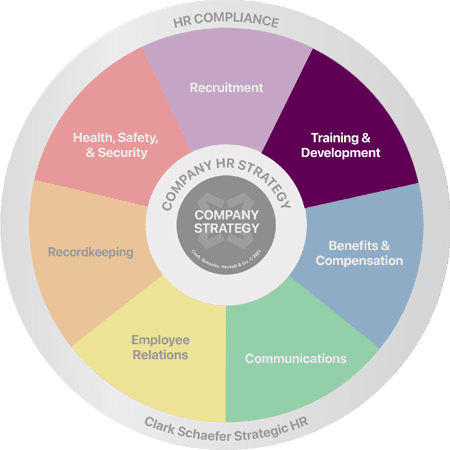Employee Engagement…From Beginning to End
Last Updated on November 28, 2017 / Employee Relations
By Patti Dunham, MA, MBA, SPHR and Debbie Hatke, MA, SPHR
Employee engagement; we’ve heard the term before and as HR professionals we know and we preach that “happy” employees are “productive” employees. But do we really understand engagement? Have we really tried to truly get employees engaged? Do we recognize, and act on the knowledge, that engagement starts well before the employee gets their first paycheck? Are we doing all that we can in every encounter we have with employees to make engagement a reality?
It goes without saying that human capital is the most important asset of every company. We have seen in a number of studies that employee engagement improves the bottom line in almost every instance and it is well worth all organizational efforts to actively engage employees. Helping employees understand the company’s direction and strategic goals, and the significance of their role in meeting those goals is essential. For employees to be committed to an organization and give 150%, they have to feel they have a stake in the company’s success.
Engagement occurs when adequately skilled employees are trained and provided with the appropriate information and tools to make level-appropriate decisions and can lead the organization in the direction of meeting its financial and strategic goals. Sound difficult to take on? It really isn’t. As with all huge projects we must undertake, it is important to break it down into more manageable pieces and success will follow.
Many programs have been created and implemented to introduce the concept of engagement to our employees, but what most of us have failed to do is to start that engagement well before the hire. Integrating employee engagement in the recruitment process is the best way to begin engagement in our organizations and is essential for long term success. Without the “right” hire for the “right” position, many of our other efforts are lost. Getting it right in the beginning is essential. So how do we accomplish this?
Creating and communicating an employment brand to employees.
A well integrated recruitment and selection process will help attract the strongest candidates. Employers who are able to quickly respond to candidates, provide them with feedback and find a way to sort through searchable information for those candidates who are not a match for the current position (but may be a match in a few months) are most successful. The ability to contact candidates quickly, and for them to contact you quickly, will allow you engage top talent and start off on the right foot.
Engaging On-boarding.
In a 2007 Watson Wyatt survey, employers who considered themselves as having a highly engaged workplace took an average of 35 weeks to bring a new hire up to speed. This compares with 15 weeks for companies that considered themselves to have lower levels of engagement. Is your organization spending time on the right activities when bringing employees on board? In addition to the typical on-boarding items, consider addressing the following.
- Explain to the employee WHY they were hired – truly WHY. What is their role and how does it fit in the organization? What do successes and failures look like in the role?
- Share with the new employee what it was about them that made them “the one”. Why did you choose this candidate? Help them understand what you valued in the individual so they can see what skills they have that can be most useful for the company.
- Provide the employee with a realistic job preview. No sugar-coating, please. New recruits must know the job as it is so they can consider their own skills, personality, and abilities to take on tasks necessary for success.
- Express your commitment to learning and development for the employee and the organization. Employees who feel employers are interested in helping them meet their personal goals are more loyal and engaged.
Engaging social networking.
Internal social networks can help your employees feel more connected. Many people use Facebook and Twitter to keep up with friends and colleagues outside of work. An internal network that allows the same type of interaction internally will allow employees to share knowledge, experiences, and interests online – a much more appealing way for some generations to interact, yet still allows employees to be involved and a part of the organization.
Employee engagement is essential and impacts your employees from well before employment all the way to resignation and/or retirement. There is a strong correlation between effective recruitment, on-boarding/integration, and the financial performance and success of a company. When addressed thoroughly, essential talent will be drawn to your company and quickly engaged. And once you reap the rewards you will easily see that engaged employees are well worth the effort.
Patti Dunham, MA, MBA, SPHR and Debbie Hatke, MA, SPHR are Senior Human Resources Management Consultants with Strategic Human Resources, Inc. (www.strategicHRinc.com). If you have questions or comments about this article, you can contact Debbie at Debbie@strategicHRinc.com and Patti at Patti@strategicHRinc.com.






